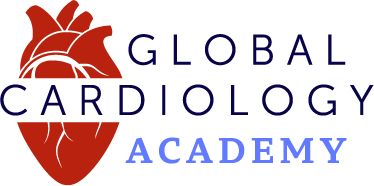Cardiac Rehabilitation: Key Considerations for Breast Cancer Survivors

Dr. Brown:
Welcome to Heart Matters on ReachMD. I’m your host, Dr. Alan Brown and on this episode, we’ll be hearing from Dr. Maryam Lustberg, Chief of Breast Medical Oncology and Director of The Breast Cancer Center at the Smilow Yale Cancer Center. Dr. Lustberg is here to discuss a recent study on cardiac rehabilitation for cancer survivors and why it’s so important. So, let’s hear from her now.
Dr. Lustberg:
We know, for example, that obesity, physical inactivity, metabolic syndrome, all of those are cardiovascular risk factors. And we have also seen associations with increased breast cancer incidence, as well as breast cancer progression after diagnosis. So, indeed, they do have shared risk factors.
Over the last several decades, we have all recognized the importance of exercise and cancer survivorship and complimentary to this our cardiovascular specialist, have developed over time a very evidence-based exercise program that is known as cardiac rehab. So, typically if a patient has a cardiac event, after they recover from their cardiac event, they actually get referred formally to these, outpatient cardiac rehab programs, which are very much regimented, they’re tailored and personalized to the patient’s fitness level and they work beautifully in the cardiovascular setting. And so, the question that we asked in this study is although there have been many, many studies looking at different exercise interventions in breast cancer, what we wanted to specifically look at is if we actually took the cardiovascular model of cardiac rehab, which as I mentioned is very structured and evidence-based, what would happen if we actually tested this model in breast cancer survivors? And the reason that we even begun to even look at this, is that even though we focus so much on breast cancer, still the majority of breast cancer survivors in the U.S. actually die from cardiovascular disease. So, again, highlighting, the shared risk factors and the heightened cardiovascular risk experienced by our breast cancer survivors and why it’s important to address it. It was a smaller study because we wanted to document feasibility, however we worked very closely with our cardiovascular colleagues and our patients actually got referred to the same program and study where the cardiovascular patients were going because we wanted to actually try to match the model as much as possible to the cardiovascular model.
I think primary care providers, oncologists, and cardiologists really need to work together, particularly with patients who have heightened cardiovascular risk factors, either due to their inherent baseline cardiovascular risk factors and then often these get augmented by some of our oncology treatments. So, we may, give survivors certain drugs that may impact their heart function more. We may put them into an earlier menopause and by reducing their estrogen level, potentially we’re heightening their cardiovascular risk. So, I think it again comes back to that team-based model of care, good collaboration understanding and awareness that it’s not simply enough to take care of breast cancer, that we have to look at the entire health spectrum and that includes cardiovascular health. And certainly increasing physical activity is a huge part of that equation and so essential.
So, in this model, patients, actually were encouraged to enroll in a 14-week cardiovascular rehab program. They had the option of essentially having a supervised exercise intervention that was tailored to them for up to three, one-hour sessions a week. And, how hard they exercised was determined by very specific testing so that they reached the target heart rate that was important for their body and their physical function. So very different than just telling our patients, ‘Well, go to the gym and get on a treadmill,’ which is something we just do a lot. So the idea was let’s do a more regimented supervised intervention, and really get the heartrate where it needs to have that regularity of sessions, and really have that supervision that many patients need because most of our patients are initially very sedentary, whether it was before breast cancer diagnosis or after.
Dr.Brown:
That was Dr. Maryam Lustberg discussing cardiac rehabilitation for cancer survivors. For ReachMD, I’m your host, Dr. Alan Brown. To find other programs in our series, visit ReachMD.com/HeartMatters, where you can be part of the knowledge. Thanks for listening.
Ready to Claim Your Credits?
You have attempts to pass this post-test. Take your time and review carefully before submitting.
Good luck!
Recommended


Targeting Vascular KCNQ5 Channels: A Promising Strategy for Blood Pressure Control
Targeting Vascular KCNQ5 Channels: A Promising Strategy for Blood Pressure Control
Heart MattersTargeting Vascular KCNQ5 Channels: A Promising Strategy for Blood Pressure Control


The LDL-C Gap in Statin-Treated Patients: A Population-Level Problem with Economic Consequences
The LDL-C Gap in Statin-Treated Patients: A Population-Level Problem with Economic Consequences
Heart MattersThe LDL-C Gap in Statin-Treated Patients: A Population-Level Problem with Economic Consequences


Reframing Monotherapy and Combination Strategies for Hyperlipidemia
Reframing Monotherapy and Combination Strategies for Hyperlipidemia
Heart MattersReframing Monotherapy and Combination Strategies for Hyperlipidemia


Diagnostic Gaps in ATTR-CM: Insights from a Multispecialty Survey in France
Diagnostic Gaps in ATTR-CM: Insights from a Multispecialty Survey in France
Heart MattersDiagnostic Gaps in ATTR-CM: Insights from a Multispecialty Survey in France
